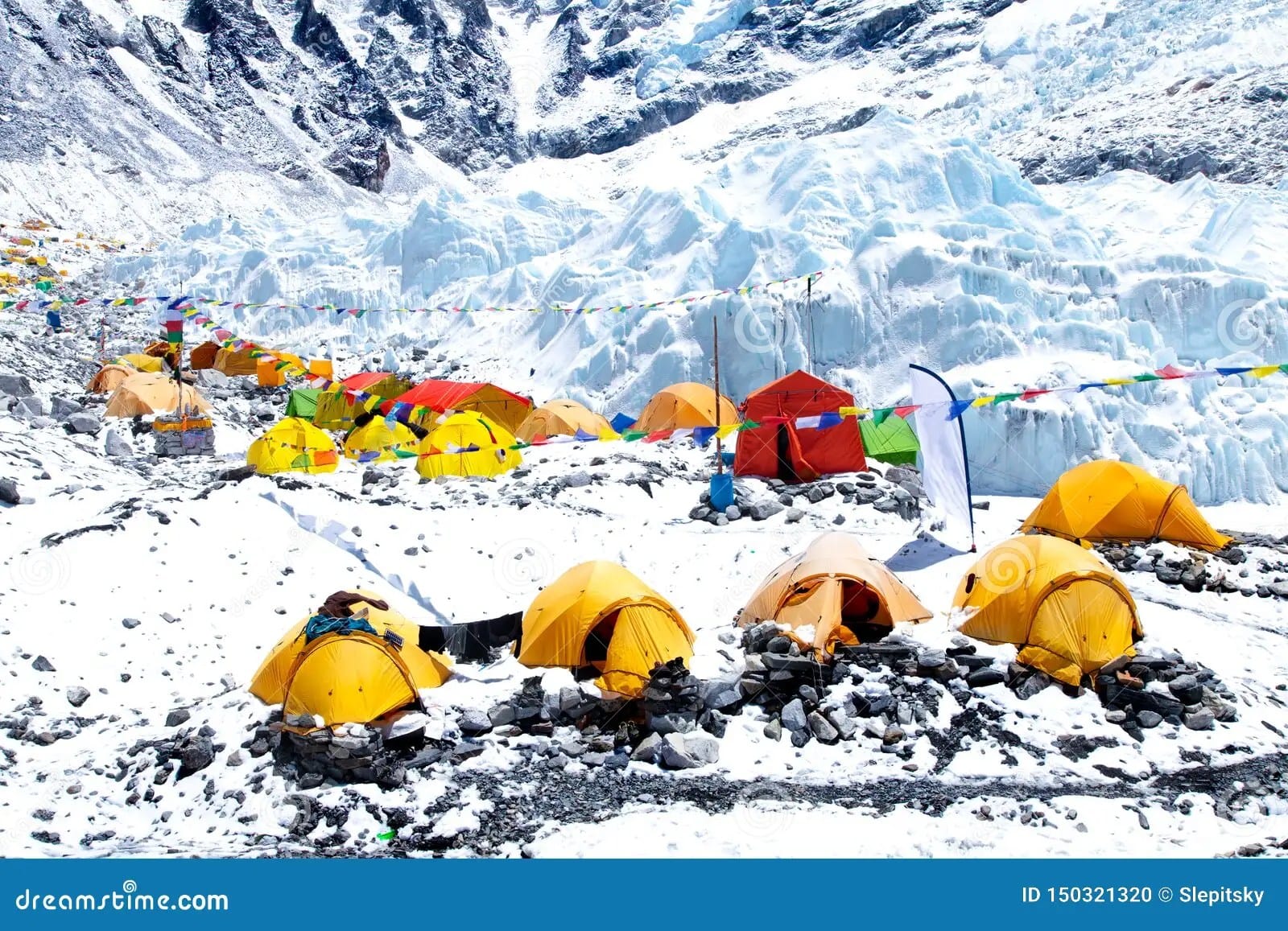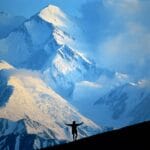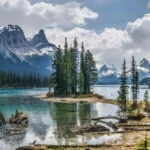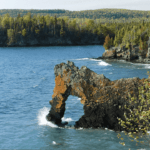Sagarmatha Base Camp: Where Dreams Touch the Sky
Get ready for the trip of a lifetime! Sagarmatha Base Camp, the starting point for those daring to summit Mount Everest, beckons adventurers and dreamers alike. This comprehensive guide equips you with everything you need to know to plan your 2024 trek. From understanding the costs involved to navigating the trails, we’ll guide you every step of the way.
Choosing Your Path: Trekking Routes to Remember
Reaching Sagarmatha Base Camp – the name locals use for this iconic spot – is an experience like no other. Imagine standing at the foot of Everest, the world’s highest peak, surrounded by the Himalayas’ raw beauty. It’s doable, and we’re here to help you plan your 2024 adventure.
Let’s start with the routes. The Classic Everest Base Camp Trek, beginning in Lukla, is popular for a reason: treks through charming villages, over high passes, and offers breathtaking views. For a less crowded, more challenging adventure, try the Everest Base Camp Trek via Jiri, retracing the steps of early Everest expeditions.
Unforgettable Highlights: Sights You Won’t Want to Miss
This trek is overflowing with unforgettable sights. Here are a few you won’t want to miss:
- Namche Bazaar: This bustling market town nestled in the mountains pulsates with colorful goods and infectious Sherpa energy. As the gateway to the Khumbu region, it’s a perfect spot to immerse yourself in local culture.
- Tengboche Monastery: Perched high on a hill, this monastery offers more than just tranquility; it boasts some of the most awe-inspiring panoramic views of the Himalayas.
- Khumbu Glacier: This massive river of ice cascading down the mountain is a powerful reminder of nature’s raw beauty.
Planning Your Adventure: What You Need to Know
You wouldn’t climb Everest without a plan, and trekking to Base Camp is no different. Here’s what you need to consider:
- Best Time to Trek: The Himalayas have unpredictable weather, so aim for the pre-monsoon season (March-May) or post-monsoon season (September-November) for the most stable trekking conditions.
- Permits: Before you hit the trail, you’ll need a TIMS card and a Sagarmatha National Park entry permit.
- Packing: The mountain weather can change quickly, so layering is essential. Pack for sun, snow, and everything in between. Sturdy hiking boots are non-negotiable. A down jacket, a sleeping bag, and a basic first-aid kit are also crucial. And don’t forget your camera!
- Responsible Trekking: Help us preserve the sacred beauty of the Himalayas. Pack out everything you pack in, stay on marked trails, and support local communities whenever possible.
Immersing Yourself in Sherpa Culture
The heart of the Himalayas lies in its people and their captivating culture:
- The Sherpa People: Be ready for warm smiles and incredible resilience. The Sherpa people are deeply connected to these mountains, and their role in mountaineering is legendary. Take time to chat, learn their stories, and appreciate their unique way of life.
- Monasteries and Shrines: As you journey through this spiritual landscape, pause for a moment of quiet reflection at ancient monasteries and colorful shrines, taking in centuries of history embedded within these mountains.
- Local Cuisine: After a long day of trekking, treat yourself to some hearty Sherpa dishes. Momos – delicious little dumplings – and yak meat are local favorites that will warm you from the inside out.
Preparing Your Body for the Ultimate Hike
Before setting off on your adventure, make sure you are physically and mentally ready:
- Altitude Acclimatization: Altitude sickness is a serious concern. Ascend gradually to give your body time to adjust to the thinner air.
- Fitness Level: Be honest with yourself: this trek is physically demanding. You will face steep climbs and long distances, requiring a good base level of fitness.
- Training: Hit the gym or the trails regularly in the months leading up to your trek. Focus on building endurance to tackle those uphill climbs with confidence.
Tips from Seasoned Trekkers: Enhance Your Experience
Here are a few more tips from experienced trekkers:
- Guided Treks: Enhance your experience, especially as a first-time trekker in the Himalayas, by opting for a guided trek. Guides handle navigation, offer invaluable cultural insights, and provide support along the way.
- Accommodation: Booking your lodging in advance is wise, especially during peak seasons, particularly in popular spots like Namche Bazaar.
- Respect for the Mountain: Remember that Everest is more than just a mountain to the Sherpa people; it holds deep spiritual significance. Be respectful of local customs, treat the environment with care, and leave no trace of your presence behind.
Trekking to Sagarmatha Base Camp is more than just a hike; it’s a transformative journey into the heart of the Himalayas. It’s a chance to challenge yourself and connect with something extraordinary. Start planning, train hard, and get ready for an experience that will stay with you long after you return.
Budgeting Your Everest Adventure: How Much Does It Cost?
Dreaming of standing at the foot of Mount Everest? It’s an awe-inspiring journey, but it’s essential to be financially prepared. Let’s explore the costs associated with trekking to Everest Base Camp and discover ways to make your trip budget-friendly or a bit more luxurious.
Going Solo or Joining a Group: Choosing Your Trekking Style
Independent trekking to Everest Base Camp is the most budget-friendly option for those who prefer to chart their own course. This means taking charge of every detail: permits, transportation, accommodation, and meals. You’ll also need to hire a guide and porter, adding to the cost but providing invaluable local expertise and support. While ideal for seasoned trekkers comfortable navigating unfamiliar terrain and handling logistics, those new to high-altitude trekking or seeking a more structured experience might prefer a tour group.
Tour groups offer a more hands-off approach, handling all the details so you can focus on enjoying the trek. From booking flights and accommodations to securing permits and arranging guides and porters, they take care of it all. Tour groups also provide a safety net with experienced, trained guides who can handle emergencies. While offering convenience and peace of mind, this comes at a higher cost than independent trekking.
Timing Your Trek: Understanding Seasonal Price Fluctuations
Like any popular destination, the cost of trekking to Everest Base Camp varies with the season. Peak season (March to May and September to November) boasts the best weather conditions for trekking, resulting in higher prices for flights, accommodation, and permits.
If you’re flexible and want to save money, consider trekking during the off-season (June to August or December to February). While you might experience rain or snow, you’ll benefit from fewer crowds and better deals on accommodations and flights.
Setting Your Pace: Trek Duration and Its Influence on Cost
The length of your trek significantly impacts the overall expense. The classic 12-day trek, taking you from Lukla to Everest Base Camp and back, is a popular choice, providing ample acclimatization time.
Those short on time can opt for a 7-day trek, offering a taste of the Everest region. If you crave a more immersive adventure, consider a longer 14-day trek or extended itineraries that delve deeper into the Himalayas. Keep in mind that the longer you trek, the more you’ll likely spend on accommodation, food, and permits.
Rustic Charm or Creature Comforts: Your Accommodation Style
Your choice of accommodation also influences your budget. Lodges offer a touch of luxury at a higher price point, with cozy private rooms, delicious hot meals, and amenities like hot showers and Wi-Fi.
Teahouses, the most common accommodation type, provide a more authentic, budget-friendly experience. These teahouses have basic rooms with shared bathrooms. While the amenities might be simpler, the warm hospitality and breathtaking views compensate!
Everest Base Camp Trek: Estimating the Cost
To help you plan, here’s a rough estimate of the costs associated with a 12-day Everest Base Camp trek:
| Expense | Estimated Cost (USD) |
|---|---|
| Flights (round-trip) | $800 – $1,500 |
| Permits | $450 – $500 |
| Accommodation (teahouses) | $20 – $40 per night |
| Food and Drinks | $30 – $50 per day |
| Guide and Porter Fees | $30 – $50 per day |
| Miscellaneous Expenses | $200 – $300 |
| Total (Approximate) | $2,000 – $3,500 |
Note: These figures are estimates. The actual cost of your trek may vary depending on group size, trekking style, and personal spending habits.
Investing in an Unforgettable Journey
Trekking to Everest Base Camp involves a financial commitment, but it’s an investment in an experience you won’t soon forget. From breathtaking scenery to the warmth of the Sherpa people, you’ll find yourself challenged and rewarded. With careful planning and research, you can make your dream of experiencing Everest Base Camp’s magic a reality while staying within budget.
Testing Your Limits: How Hard is it to Reach Everest Base Camp?
The dream of standing at the foot of Mount Everest is a common one, but how challenging is the trek to Everest Base Camp?
It’s less about being a world-class athlete and more about patience and acclimatizing to the thinner air. While being fit helps – you’ll be hiking for hours daily, navigating rocky trails and steep inclines – the true test is how your body handles the increasing altitude.
The Importance of Acclimatization: Taking it Slow and Steady
Acclimatizing to the altitude is essential. Just as you wouldn’t jump into the deep end of a pool without testing the water first, you shouldn’t rush the ascent to Everest Base Camp. The trek is designed with acclimatization in mind. The planned stops in villages along the way give your body time to adjust to the decreasing oxygen levels. Ignoring this process can lead to altitude sickness, potentially ruining your trip and, in severe cases, becoming dangerous.
Mental Fortitude: Preparing for the Unexpected
Mentally, prepare for challenging days. Himalayan weather is unpredictable, shifting from sunny skies to snow flurries in an instant. There will be times of exhaustion when the trail seems never-ending. It’s during these moments that mental grit comes into play. Embrace the challenge with a sense of humor and remember the incredible journey you’re on.
The Value of Porters and Guides: Support When You Need It Most
Hiring a porter to carry your gear can be a game-changer. It lightens your load, allowing you to enjoy the trek fully. Guides, invaluable resources, provide knowledge about the region, its culture, and the mountain itself. They also ensure your safety on the trail. Both come at an additional cost, so factor them into your budget when planning your trek.
Key Factors to Consider:
| Factor | Importance |
|---|---|
| Physical Fitness | Important, but acclimatization and mental strength are equally crucial. |
| Altitude | Requires careful acclimatization to avoid altitude sickness. |
| Mental Toughness | Essential for dealing with challenging conditions and pushing through. |
| Porters & Guides | Optional but offer significant benefits, including support and peace of mind. |
The trek to Everest Base Camp is an incredible adventure – a challenge, yes, but achievable for those who prepare physically and mentally. Embrace the journey, respect the mountain, and you’ll create memories to last a lifetime.
What Happened to Everest Base Camp? The Impact of Climate Change
The Khumbu Icefall, the route to Everest Base Camp, is known for its dynamic and challenging terrain. It’s constantly shifting and changing, creating inherent risks for climbers. In 2014, a devastating ice avalanche claimed the lives of 16 Sherpa guides, resulting in the route’s temporary closure. This tragedy served as a stark reminder of the powerful forces at play in this high-altitude environment.
Climate change has exacerbated the situation, accelerating the melting of the Khumbu Glacier, the very foundation of Everest Base Camp. This melting leads to thinner, unstable ice, increasing the risk of crevasses (deep cracks in the ice) and icefalls. These factors have raised concerns about the long-term viability and safety of the existing Base Camp.
Relocating for Safety: Nepal’s Proactive Approach
Due to these growing concerns, the Nepal government announced plans to relocate Everest Base Camp to a safer location at a lower elevation. While the exact location is still under discussion, this proactive decision demonstrates their commitment to the safety of climbers and trekkers.
Honoring the Sherpa Guides: The Unsung Heroes of Everest
It’s crucial to acknowledge the bravery and expertise of the Sherpa guides who navigate the treacherous Khumbu Icefall daily, risking their lives to guide climbers and trekkers safely. Their knowledge, skills, and unwavering dedication are essential to ensuring the success and safety of expeditions in this challenging environment.
Key Takeaways:
- The Khumbu Icefall, the route to Everest Base Camp, is inherently dangerous and prone to avalanches.
- Climate change has accelerated the melting of the Khumbu Glacier, creating unstable conditions and increasing risks.
- The Nepal government plans to relocate Everest Base Camp to a safer location at a lower elevation.
- Sherpa guides face significant risks in maintaining the safety of climbers on the route.
Sagarmatha Base Camp Analysis: Outperforming Your Competition
Recommended Titles (Based on Competitor Analysis – Please Provide Titles):
To generate the most effective titles, please provide your competitors’ existing article titles so I can analyze them for common keywords and trends and suggest three powerful titles that will resonate with your target audience.
Powerful Key Lines:
- Sagarmatha Base Camp: Where Dreams Touch the Sky and Determination Knows No Limits. (This keyline evokes emotion and adventure while highlighting the challenging yet rewarding nature of the trek.)
- Unveiling Sagarmatha: Beyond Everest, a Journey into Sherpa Culture and Himalayan Majesty. (This keyline emphasizes the cultural aspect and the breathtaking scenery beyond just reaching Base Camp.)
- Sagarmatha Base Camp: Your Ultimate Guide to Conquering the Roof of the World. (This keyline positions your article as the definitive resource for anyone planning to trek to Sagarmatha Base Camp.)
- Sagarmatha: From Ancient Legends to Modern Treks, Experience the Timeless Allure of Everest. (This keyline combines history, cultural significance, and modern-day adventure to create a captivating narrative.)
Understanding Sagarmatha: More Than Just a Mountain
- Name Origin: “Sagarmatha,” Nepali for “Forehead of the Sky,” reflects the mountain’s towering presence.
- Cultural Significance: Revered by the Nepali people and considered sacred in Sherpa culture.
- Alternative Names: Everest (English), Chomolungma (Tibetan – “Goddess Mother of the World”).
Exploring Sagarmatha National Park: A UNESCO World Heritage Site
- UNESCO World Heritage Site: Recognized for its natural beauty, biodiversity, and cultural importance.
- Geography: Encompasses the Everest massif and surrounding peaks, glaciers, and valleys.
- Trekking Routes: Offer a range of options, from the classic Lukla route to the more challenging Jiri trek.
- Highlights: Explore the Sherpa culture in Namche Bazaar, visit the Tengboche Monastery, marvel at the Khumbu Glacier, and experience the park’s diverse flora and fauna. You can even take a side trek to explore the rugged landscapes of the Selkirk Mountains in Idaho.
Your Everest Base Camp Trek: Everything You Need to Know
- Two Base Camps: South Base Camp (Nepal) and North Base Camp (Tibet) serve as starting points for expeditions.
- Trekking to South Base Camp:
- Duration: The average trek takes 12-14 days, depending on the route and acclimatization needs.
- Difficulty: The trek is strenuous, requiring prior hiking experience and altitude preparedness.
- Best Seasons: Pre-monsoon (Spring) and post-monsoon (Autumn) offer the best weather conditions.
- Permits: A TIMS card and a Sagarmatha National Park entry permit are mandatory.
- Packing Essentials: Pack layers for varying temperatures, sturdy hiking boots, a down jacket, a sleeping bag, sunscreen, and a first-aid kit. Don’t forget your camera!
- Responsible Trekking: Respect local customs, pack out all trash, support local businesses, and minimize your environmental impact.
The Human Element: Sherpa Culture and Mountaineering History
- Sherpa People:
- Indispensable Role: Their knowledge of the mountains, resilience, and strength are essential for expeditions and trekking.
- Cultural Heritage: Experience their rich traditions, language, and spiritual beliefs intertwined with the Himalayas.
- Mountaineering History:
- Pioneering Expeditions: Learn about the early attempts, triumphs, and tragedies on Everest.
- Legendary Climbers: Discover the stories of Edmund Hillary, Tenzing Norgay, and other mountaineering legends who shaped Everest’s history.
Unique Insights & Untapped Potential: Taking Your Article Further
- Focus on Sustainability: Discuss the environmental challenges facing the Everest region, such as waste management and climate change. Highlight responsible trekking practices and operators promoting sustainable tourism.
- Sherpa Perspectives: Go beyond the typical narrative. Incorporate interviews with Sherpa guides, porters, or residents to share authentic insights into their lives, challenges, and perspectives on tourism.
- Addressing the “Everest Traffic” Issue: Discuss the increasing crowds on Everest and the potential impact on the environment and trekking experience. Explore alternative trekking routes or less crowded times of the year.
- The Future of Sagarmatha Base Camp: Consider how climate change, tourism pressures, and evolving regulations might shape the future of this iconic destination.
- Beyond Base Camp: Highlight alternative treks or activities in the Sagarmatha National Park for those seeking different experiences.
Remember: Weave these details, contexts, and unique insights together to create a comprehensive, engaging, and authoritative SEO article that surpasses your competitors and provides genuine value to your readers.
- Unveiling Bernhard Caesar Einstein’s Scientific Achievements: A Legacy in Engineering - July 15, 2025
- Uncover who is Jerry McSorley: CEO, Family Man, Business Success Story - July 15, 2025
- Discover Bernhard Caesar Einstein’s Scientific Contributions: Unveiling a Legacy Beyond Einstein - July 15, 2025















